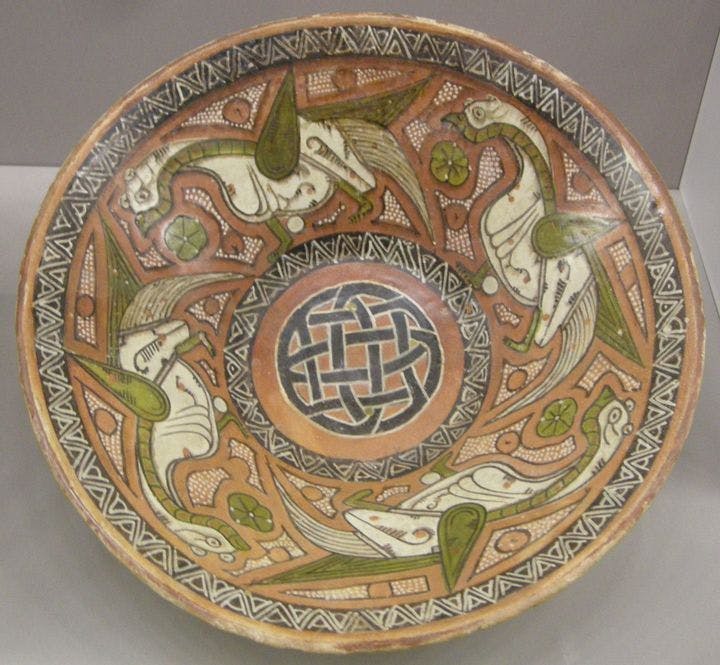Spring 2009
Evolved Tastes
– John Onians
John Onians on aesthetics and evolution.
The triumphs of culture are the product not of fashion, but of deeply rooted instincts. This is the central argument of Denis Dutton’s tour de force The Art Instinct, in which he shows that the most compelling works of art in all societies, from the most urban to the most scattered, have common attributes. These characteristics are so universal that they are best understood not as having been built by a process of “social construction” over millennia, but as forged by the powerful selective pressures to which our ancestors were exposed starting roughly 1.6 million years ago during the Pleistocene Epoch, “the evolutionary theater in which we acquired the tastes, intellectual features, emotional dispositions, and personality traits that distinguish us from our hominid ancestors.” Dutton examines the consequences of this exposure in The Art Instinct, leading us to reconsider some of the central problems of aesthetics.
Sometimes Dutton focuses on a particular artistic manifestation, as when he reflects on the preference of people from Kenya to Iceland—as expressed in a 1993 worldwide poll—for bluish landscapes containing people, animals, and some water. This taste results, Dutton argues, not from contemporary exposure to such images, as the prominent art critic and philosopher Arthur Danto has claimed, but from an inborn taste for a landscape resembling the African savanna in which our ancestors thrived during the Pleistocene.
Sometimes Dutton’s viewpoint is truly Olympian, as when he identifies the “cluster criteria” that define art: “direct pleasure,” “skill and virtuosity,” “style,” “novelty and creativity,” and so on. These qualities, he suggests, are manifest to different degrees in Schubert songs, Shakespearean sonnets, and the Sepik shields of New Guineans. Because his criteria “are not chosen to suit a preconceived theoretical purpose,” they provide a “neutral basis for theoretical speculation.”
Dutton—who founded the popular website Arts & Letters Daily and teaches the philosophy of art at the University of Canterbury, New Zealand—cites leading philosophers, biologists, sociologists, and evolutionary psychologists. Some he challenges, others he co-opts. Always he is incisive, as when he robustly disputes the claims of some anthropologists that the artifacts of the communities they study—such as Hindu jyonti paintings—share nothing with Western conventions. Usually, in spite of his evident impatience, Dutton is respectful, allowing his opponents to have their say before dispatching them.
He is less convincing when advancing his own core idea, that all the activities he groups together as artistic are the product of a rich but unitary mental inclination shaped by sexual selection—the evolutionary process that pits suitors against one another. Charles Darwin proposed this mechanism to explain excesses, such as the peacock’s tail, that appear incompatible with the economy of “natural selection,” and Dutton invokes it to explain the richness and elaboration of art. In his view, it was the persistence of the selective pressures associated with obtaining a mate that led to the development of a single “art instinct.” Although he strives to defend this suggestion against the notion that the many forms of artistic activity are simply spinoffs from a myriad of abilities shaped by natural selection, he is unable to explain the advantage of his reductive view. The very complexity of artistic expression suggests deeper roots than the need to impress and attract a mate.
Dutton’s thesis is also undermined by his brilliant penultimate chapter, in which he shows that the senses of smell and hearing, both vital to survival, have not developed to the same potential as vehicles of artistic expression. Music, in particular, presents a challenge to his theory about the unity of the arts as evolved under the pressures of sexual selection. He bluntly admits that “annexing music wholly to the procreative interests in the way that sexual selection suggests misses a great deal of the art itself as we understand it today.” As he goes on to point out, “Much music making is communal on a large scale (chorus or orchestra before a large audience), whereas lovemaking remains cross-culturally a private transaction.” At the end of his chase, the single explanation eludes him.
Still, the odd bent feather does nothing to diminish the overall achievement of this peacock’s tail of a book. Taking us on a world tour of creative masterpieces and exploiting a rich spectrum of the mind’s resources, Dutton succeeds in persuading us that we will never understand human culture unless we understand human nature.
* * *
John Onians is professor emeritus of art history at the University of East Anglia and the author, most recently, of Neuroarthistory: From Aristotle and Pliny to Baxandall and Zeki (2008).
Reviewed: The Art Instinct: Beauty, Pleasure, and Human Evolution by Denis Dutton, Bloomsbury, 278 pp, 2010.
Photo courtesy of Wikimedia Commons
Up next in this issue
